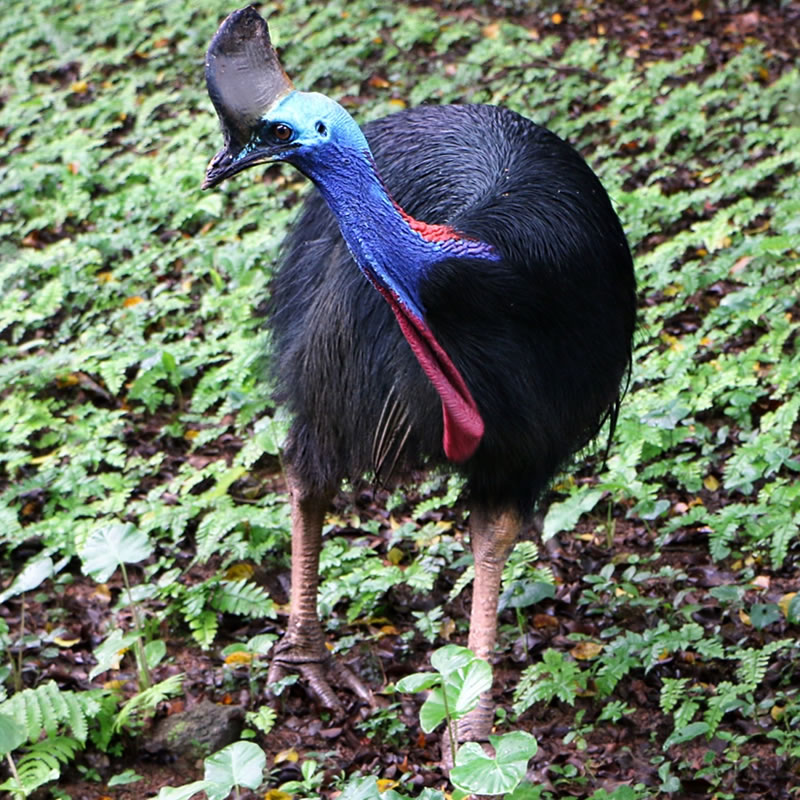
Scientific Name
Casuarius casuarius
Classification
| Kingdom | Animalia |
| Phylum | Chordata |
| Class | Mammalia |
| Order | Struthioniformes |
| Family | Casuariidae |
| Genus | Casuarius |
| Species | casuarius |
IUCN Redlist Status

Location
Southern cassowaries can be found in Northern Australia, New Guinea and surrounding islands.
Habitat
These unique birds live in the rainforest. They are suited to live in the dense foliage of the rainforest and the low, swampy areas of northern Australia and the island of New Guinea.
Diet
The diet of southern cassowaries consists mostly of fruit. Cassowaries are very important to the rainforest because they spread the seeds of large fruit after eating the fruit. Southern cassowaries also eat various types of vegetation, insects and fungi.
Size
Southern cassowaries are among the heaviest birds on earth, second only to the ostrich. They can weigh up to 130 pounds. An adult grows between 4.5 - 6 feet tall.
Description
Both female and male adult cassowaries have similar appearances. Southern cassowaries are covered in black feathers. Like ostriches and emus, these feathers do not assist cassowaries in flight. Rather, they offer protection from sun, wind, rain or other elements. The head and neck areas are covered with beautiful, bright blue feathers.
The most noticeable feature of southern cassowaries might be the helmet-like structures on the tops of their heads. These structures are called "casques" and probably protect the bird from low-hanging thorns and branches that could scrape their heads and faces.
Their feet have three toes equipped with sharp claws. The inner toe has an enlarged claw that is used as protection against potential predators.
Reproduction
The breeding season of southern cassowaries lasts between June and November. Females are dominant to males, and may mate with more than one male during a season. Females will then lay their eggs in a nest or scrape built on the ground. After a female lays her eggs, she leaves to mate with other males. The male remains with the nest to incubate the eggs until they hatch.
Other Facts
These large birds are potentially dangerous to humans as they have aggressive tendencies. These large birds should not be approached in the wild.
